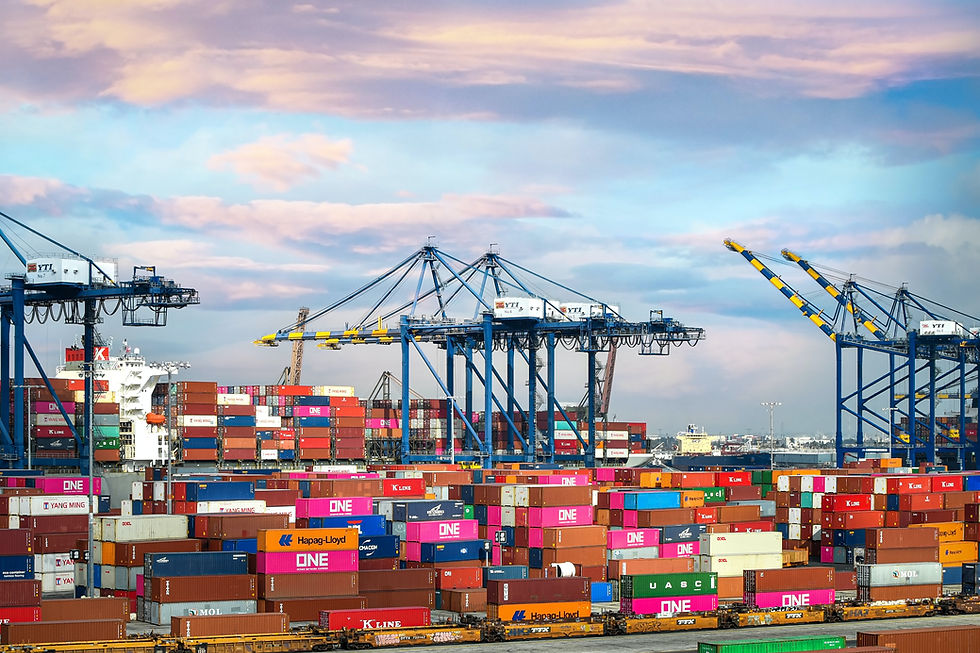The Business of De-Risking: Why Global Corporations Are Redrawing Supply Maps
- Analysis by Current Business Review

- May 28
- 2 min read

In 2025, the new global growth strategy isn’t expansion—it’s insulation.
From Fortune 500s to mid-market manufacturers, companies around the world are engaged in one of the most significant operational shifts of the decade: de-risking their supply chains. What began as a reactive move to pandemic-era disruption has now become a proactive business strategy—redrawing supply maps, diversifying production hubs, and rethinking just-in-time models in favor of resilience-first thinking.
This isn’t about fear. It’s about future-proofing.
Why the Old Model Broke
For decades, the global economy relied on ultra-lean, ultra-efficient supply chains. Goods moved through concentrated hubs, primarily in Asia, at record speed and record margins.
But over the last five years, a series of shocks exposed the fragility of that model:
COVID-19 shutdowns that paralyzed entire sectors
Geopolitical rifts reshaping trade relationships
Labor shortages, energy instability, and raw material volatility
A growing emphasis on national security in tech and manufacturing
Suddenly, low cost came at a high price—and companies are rethinking everything.
Diversification Over Dependence
De-risking doesn’t mean deglobalization. It means rebalancing.
Instead of consolidating production in a single region, companies are now:
Building multi-region sourcing models to avoid bottlenecks
Investing in nearshoring and friendshoring to bring operations closer to key markets
Shifting assembly, warehousing, and fulfillment to dual or triple-source systems
It’s not just about risk mitigation—it’s a move toward operational agility in a fragmented world.
The Boardroom Imperative
De-risking has gone from a logistics concern to a C-suite mandate.
Today, top CEOs and CFOs are asking:
“Where are we most vulnerable in our supply chain stack?”
“What happens if our top supplier goes offline for 30 days?”
“How much exposure do we have to foreign policy shifts or sanctions?”
In response, boards are demanding detailed supply chain resilience reports as part of annual planning. What was once buried in operations is now a strategic pillar of business continuity and valuation.
AI, Automation, and Smart Planning
Technology is at the center of this transformation. Companies are leveraging:
AI-powered supply chain visibility tools to anticipate risk
Digital twins to simulate disruption scenarios before they hit
Automation and robotics to create redundancy in fulfillment centers
Blockchain and traceability platforms for secure vendor networks
The goal? To create intelligent, decentralized systems that adapt to shocks instead of collapsing from them.
The Geopolitical Edge
De-risking isn’t just an operational win—it’s becoming a competitive differentiator.
Companies that adapt early are gaining:
Greater flexibility in responding to market demands
Increased investor confidence due to lower exposure
New local partnerships and government incentives in emerging hubs
Brand trust from conscious consumers focused on ethical, regional sourcing
In some industries, resilience is now the real moat.
The Bottom Line
In today’s global economy, the most valuable asset isn’t speed or scale. It’s stability.
As uncertainty becomes the baseline, companies that prioritize de-risking are no longer playing defense—they’re shaping new growth models rooted in agility, foresight, and smart decentralization.
This isn’t just supply chain strategy. It’s survival architecture for the next era of global business.




Comments